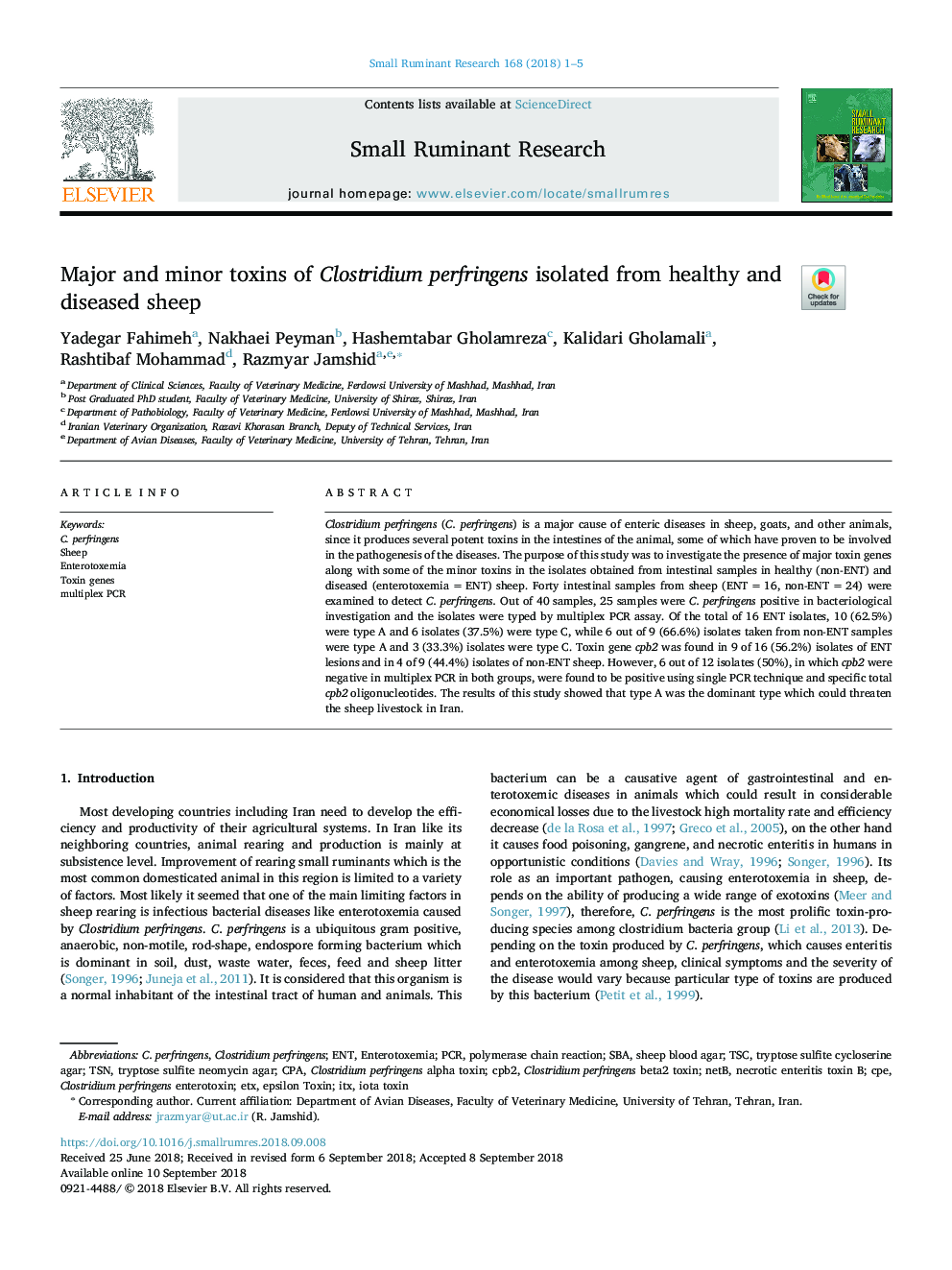| Article ID | Journal | Published Year | Pages | File Type |
|---|---|---|---|---|
| 10158144 | Small Ruminant Research | 2018 | 5 Pages |
Abstract
Clostridium perfringens (C. perfringens) is a major cause of enteric diseases in sheep, goats, and other animals, since it produces several potent toxins in the intestines of the animal, some of which have proven to be involved in the pathogenesis of the diseases. The purpose of this study was to investigate the presence of major toxin genes along with some of the minor toxins in the isolates obtained from intestinal samples in healthy (non-ENT) and diseased (enterotoxemiaâ=âENT) sheep. Forty intestinal samples from sheep (ENTâ=â16, non-ENTâ=â24) were examined to detect C. perfringens. Out of 40 samples, 25 samples were C. perfringens positive in bacteriological investigation and the isolates were typed by multiplex PCR assay. Of the total of 16 ENT isolates, 10 (62.5%) were type A and 6 isolates (37.5%) were type C, while 6 out of 9 (66.6%) isolates taken from non-ENT samples were type A and 3 (33.3%) isolates were type C. Toxin gene cpb2 was found in 9 of 16 (56.2%) isolates of ENT lesions and in 4 of 9 (44.4%) isolates of non-ENT sheep. However, 6 out of 12 isolates (50%), in which cpb2 were negative in multiplex PCR in both groups, were found to be positive using single PCR technique and specific total cpb2 oligonucleotides. The results of this study showed that type A was the dominant type which could threaten the sheep livestock in Iran.
Keywords
Related Topics
Life Sciences
Agricultural and Biological Sciences
Animal Science and Zoology
Authors
Yadegar Fahimeh, Nakhaei Peyman, Hashemtabar Gholamreza, Kalidari Gholamali, Rashtibaf Mohammad, Razmyar Jamshid,
